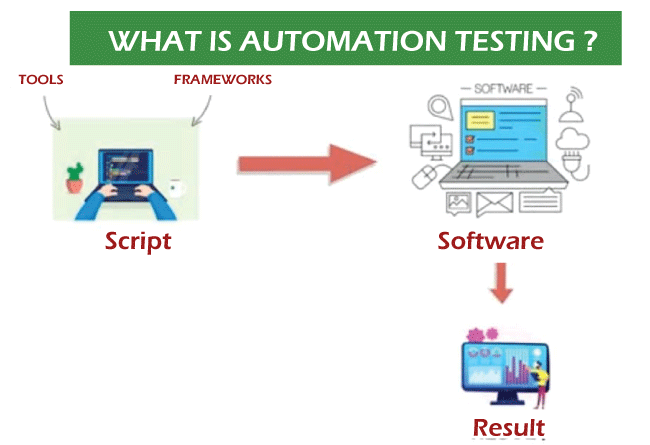Automation Testing: Secret Tips to Improve Advancement Lifecycles
Automation Testing: Secret Tips to Improve Advancement Lifecycles
Blog Article
From Handbook to Automated Testing: A Comprehensive Guide to Transitioning Smoothly and Efficiently
In the world of software application testing, the change from manual to automated procedures has ended up being an increasingly crucial transition for companies seeking to improve efficiency and precision in their screening practices. The trip from manual to automated testing is not without its difficulties, yet when approached purposefully and with a clear plan in mind, the advantages can be substantial.
Benefits of Automated Examining
Automated testing supplies various benefits, enhancing performance and accuracy in software application development processes. One key benefit is the considerable decrease in testing time. Automated tests can be run concurrently on multiple gadgets and running systems, considerably quickening the testing phase contrasted to manual testing. This raised effectiveness permits faster feedback on the high quality of the software program, enabling designers to recognize and address problems promptly.
Moreover, automated screening makes sure a greater level of precision in discovering issues. Uniformity in screening is additionally improved, as automated examinations perform the exact same actions exactly each time they are run.
Selecting the Right Tools

First of all, examine your objectives and requirements. Understand the scope of your job, the innovations included, and the skill set of your team. This evaluation will certainly aid you determine the attributes and capacities you require in your testing devices.
Second of all, think about the compatibility of the tools with your existing systems and processes. Smooth combination with your current software growth lifecycle is important to make certain a smooth change to automation.
Furthermore, evaluate the scalability and adaptability of the tools. As your testing requires develop, the tools need to have the ability to adapt and accommodate adjustments successfully.
Lastly, consider the assistance and neighborhood around the tools. Durable support and an energetic individual area can provide important resources and aid when carrying out automated testing. By meticulously taking into consideration these facets, you can choose the right devices that line up with your needs and set the phase for an effective shift to automated screening.
Creating Effective Examination Manuscripts

When crafting test manuscripts, it is important to consider the certain requirements of the software program being tested and make certain that the scripts attend to all crucial capabilities. Detailed and clear naming conventions for test manuscripts and test situations can boost readability and maintainability. Additionally, integrating mistake handling systems within the examination manuscripts can help in recognizing and addressing problems without delay.
Additionally, arranging examination scripts into modular parts can improve reusability and scalability, reducing redundancy and boosting efficiency in test manuscript upkeep. Regular evaluations and go to my blog updates to check manuscripts are essential to equal evolving software application needs and functionalities. By adhering to these concepts, testers can create robust and efficient examination manuscripts that add significantly to the success of automated testing processes.
Integrating Automation Into Workflows
By seamlessly incorporating automated testing devices like Selenium or Appium into the software application development lifecycle, groups can achieve faster responses on code modifications, leading to quicker bug detection and resolution. This assimilation enables for continual testing throughout the development process, ensuring that any type of concerns are determined early on, resulting in greater software high quality. Proper combination of automation devices requires partnership in between development, screening, and operations groups to establish a unified process that maximizes efficiency and efficiency in supplying premium software program products.
Making Sure a Smooth Change
Successfully transitioning to automated testing includes precise preparation and cautious implementation to minimize interruptions and make best use of effectiveness in the software application growth procedure - automation testing. To make sure a smooth shift, it is important to begin by performing a complete analysis of the existing screening procedures and recognizing locations where automation can bring one of the most considerable advantages. Involving with all stakeholders early at the same time, consisting of designers, testers, and job supervisors, is vital for amassing assistance and buy-in for the automation effort
Interaction is key during this transition stage. Clear interaction of the objectives, benefits, and expectations of automated testing helps to manage any kind of resistance or problems that might develop. Furthermore, supplying adequate training and resources for group participants to upskill in automation tools and techniques is vital for ensuring an effective shift.
Final Thought
To conclude, transitioning from guidebook to automated screening supplies numerous benefits, including see this website raised efficiency and reliability. By selecting the appropriate tools, writing effective test scripts, and integrating automation perfectly into process, organizations can guarantee a smooth and successful transition. It is vital to accept automation as an important asset in software testing procedures to boost general high quality and efficiency.
In the realm of software application screening, the go to this website shift from manual to automated processes has actually come to be a progressively important transition for companies looking for to improve efficiency and precision in their screening methods. Automated examinations can be run simultaneously on numerous gadgets and operating systems, significantly speeding up the screening phase compared to hand-operated testing. Consistency in screening is also boosted, as automated examinations perform the very same actions exactly each time they are run.To guarantee the successful application of selected screening tools, the creation of efficient test manuscripts plays a crucial duty in verifying the functionality and efficiency of automated procedures - automation testing. By complying with these principles, testers can produce reliable and robust examination scripts that add considerably to the success of automated screening processes
Report this page